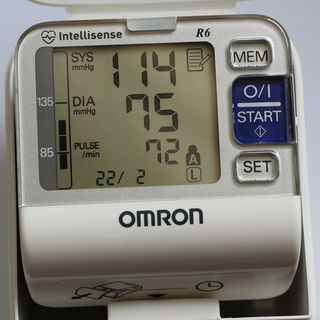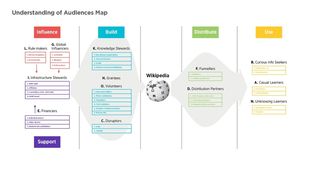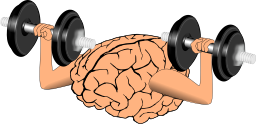
I have a friend whose brain does cool things with numbers: converts years into days or hours in a flash, spots patterns in long sequences, estimates tax or yardage within pennies and inches. He’s not a mathematician or a savant, just someone whose brain finds pleasure in numbers. He’s also a teensy bit compulsive: balances his checkbook to the penny, measures his weight to the ounce, remembers how many yellow warblers he saw the summer he became a birder. His life is organized, measured and, to me, comforting, since I tend to live with a bit more chaos. He taught me to play poker, and although I don’t always know if there are any wild cards, I’m a better player every time we play together, thanks to his teaching.
Lately numbers are proving to be a beneficial focus. Numbers now are—pardon the pun—a primary source of motivation in my life. I’m using numbers to improve my physical, emotional, cognitive, and financial health. Numbers help me strengthen my body, enhance my confidence, stretch my brain, and build my security. Rather like my experience with geometric formulae in high school math, the numbers I focus on make me feel in control of my life.
Numbers have always mattered in my management of diabetes. Blood sugar is measured in numbers; many of us with decades of experience with diabetes don’t recall the unit of measure for it (in the U.S., it’s milligram per deciliter), but we know that normal, non-diabetic blood sugar typically runs between 70-110 mg/dl. Now, thanks to the use of a continuous glucose monitor (CGM) that reads my blood sugar constantly and alerts me when it is moving up or down too quickly, as well as when it gets outside my diabetic ideal range, I can adjust my diet, exercise, and insulin dose to keep my blood sugar in that range, and much closer to the non-diabetic level.

I now look at my blood sugar number periodically during the day, and the 7-day average every morning, making small adjustment to my daily dosage when clear trends appear (current challenge: a high spike in blood sugar from 10:00 am to 1:00 pm). Knowing that all sorts of things affect my average—that bite of brownie I had at the coffee hour after church, the stress of driving through heavy traffic on vacation this week, the shortened time at the gym because of an early-morning appointment, the need to change my pump’s infusion set—I need to be patient and look for big patterns or I’ll knock everything out of whack by adjusting too much. Sometimes I need to adjust the slow and regular basal rate, sometimes the faster bolus dose that covers food.
In general, tracking the numbers carefully and regularly has flattened out my blood sugar to a good level with a modicum of brief high numbers and virtually no lows, and made me aware of the things I can manage: not eat a bite of brownie very often, travel on Tuesday rather than Monday, prioritize exercise over some appointments, remember to change that dang infusion set every three days, Elizabeth! Writing down the weekly average, and reviewing the data from the CGM, has lowered my current average 100 mg/dl, a shocking and meaningful amount that is beneficial to my health and, I’m happy to report, to the way I feel.

I do another set of numbers every morning these days: take my blood pressure and pulse. The routine: plug the CGM into the computer so the weekly report can be calculated, then put on the blood pressure cuff and feel it tighten. When the blood pressure and pulse appear, the CGM report is done too, and I write all the data down on my neon-bright numbers papers. I feel relief seeing the clearly normal numbers in their official format, day after day, even though I continue to have irksome symptoms. The cardiologist took the time to review the numbers I've tracked, and their normality caused her to think about what other factors might be in play--another test, and perhaps an answer.

I then quickly scan the “blogger home” page for my blog, note the number of views of the last post, which is useful, if vague, info about interest in the topic I addressed. I check the number of views of all my posts in the last week. If that’s falling off, I need to get the next post up. My last check is the total number of views since I started the blog. I delight in increases in views because Agent Carolyn tells me that publishers are interested in such statistics, assuming that they indicate a potential readership for a book.
There are other areas in my life where I am working on making numbers work for me. Among them: minutes on the elliptical at the gym. I don’t feel like I need to increase the minutes daily. Instead, I’m working on an upward trend, just as I am working on a downward trend in blood sugar. Trends show the bigger picture and make note of incremental shifts. In many changes in life—particularly changes of habit—increments are the unit of choice. The unit “mg/dl” doesn’t matter in my daily life, but the trend up or down does matter in how I feel and in my ongoing health.
Numbers externalize sensitive psychological challenges: my childhood history with diabetes is loaded with difficult feelings, including anxiety, failure, shame. Now that I can work with the numbers that diabetes management is all about, I can separate from the scared little girl whose hypoglycemic brain didn’t work, or who minded people telling her she couldn’t have ice cream, or felt embarrassed and flawed when a doctor commented, “You can do better than that” when she showed him her blood glucose log.
My blood pressure and heart rate issues are still a bit of a mystery after the usual tests. While the symptoms make me uncomfortable and uneasy, new medication keeps the pulse lower and reassures me that I’m really not going to die of a heart attack or stroke today.
The stats on blog views give me a sense of purpose in writing the blog and working on the book project—there is an audience out there, and I find the implication of social connection and communication emotionally gratifying and intellectually motivating.
Numbers make complicated things (health, emotions, work, relationships) more manageable. Tracking numbers has changed my life for the better. When I was younger, I didn’t know the pleasure in making numbers work for me. Numbers were abstract, not symbolic. Now that I can see what they mean in my life, I love them.
Oh, and by the way, my financial advisor Jon is smiling at me because he’s making yet another set of numbers serve me better than they did in the past.





